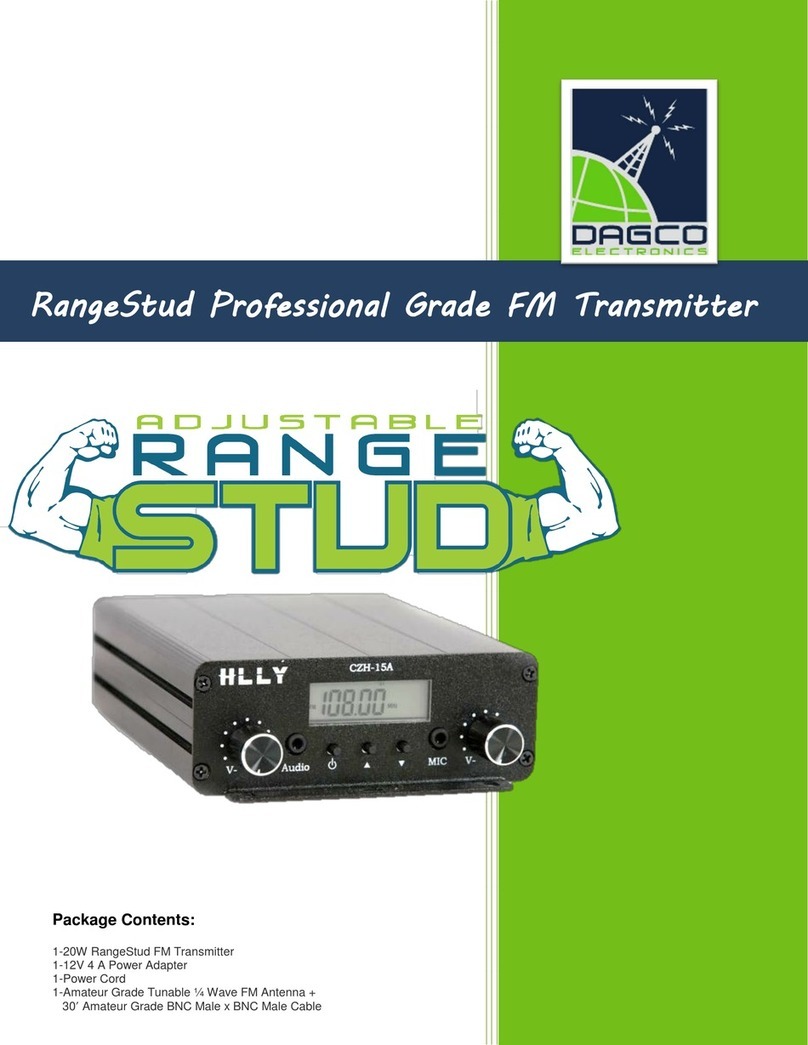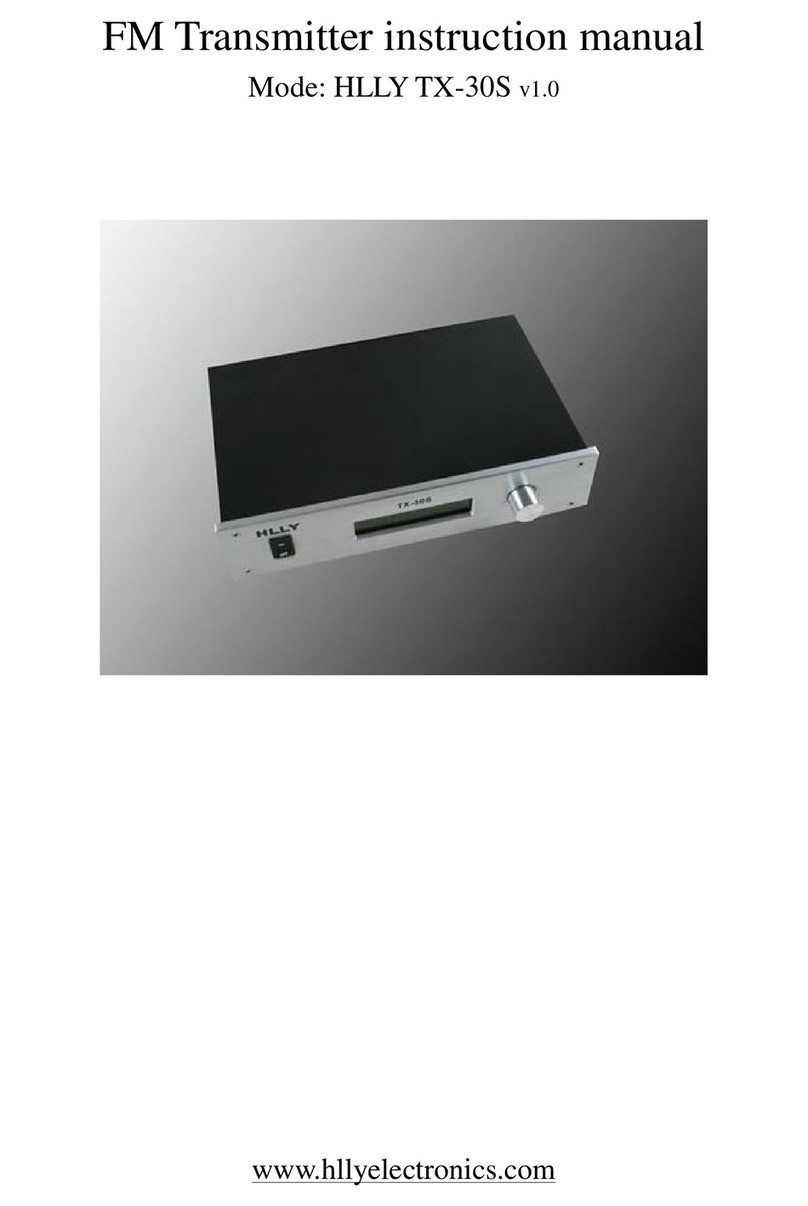6. When transmitting from a microphone; only use a stereo plug microphone, using any other type of
microphone such as a mono plug microphone will permanently damage your unit, see “Operating Instructions -
step #4”
7. Always ensure that proper antenna tuning methods were used. Be resourceful, this Instruction Manual is only
a guide…FM Radio Transmission is a very tedious task and many variables factor into how clear your signal gets.
Troubleshooting:
1. Transmitting volume is too low: Make sure to increase volume level of audio source device to at least
50% level. When using transmitter with PC or Mac computer the volume will need to be set at three
different levels, see step #7 in operating instructions section.
2. Transmit range is too low: The transmit range will vary as per your environment, antenna type,
power supply, and/or frequency setting. Placing the transmitter (or antenna) on the highest altitude inside
or outside of a building with the least amount of obstacles will give you the optimum range. In addition,
optimizing the antenna tuning with the help of a SWR Meter would be recommended!
3. When using transmitter with satellite receiver, TV or DVD player audio the sound is distorted: These types
of audio/video devices generally do not have volume control capabilities. Therefore, simply adjust (G)
Audio Volume Control.
4. There is a constant hum on my radio: Proper grounding techniques and tuning of the antenna are
very important steps (See the Antenna Tuning Section). Also, make sure any input wire coming into
the transmitter has an RF Noise Filter (Ferrite).
Remember: Every frequency has a unique antenna setting!
A brief introduction to the rules of the FCC and your FM Transmitter
It is the policy of Castle Broadcasting Systems, that knowing and observing the lawful use of all transmitters is
a first responsibility of our end users. We do not endorse any unlawful use of any of our transmitters, and we try
to give you as much common sense help about normal and lawful use as we can. Further, it is the policy of
Castle Broadcasting Systems to cooperate with all applicable federal regulations in the design and marketing of
our electronic devices. In all instances, compliance with FCC rules in the operation of what the FCC terms
an "intentional radiator" is always the responsibility of the user of such an "intentional radiator".
Castle Broadcasting Systems only offers this information to make the user aware of the full impact a
transmitter can have. In no way should this brief discussion be construed as a definition of the FCC rules, it is
the users obligation to obtain a copy of the rules and operate legally according to them. Castle
Broadcasting Systems
makes no representation as to the following discussion being legally correct -
it is simply offered as an introduction to the responsibilities that a user must realize.
To order
your copy of the FCC rules part 15, call the US Government, Superintendent of Documents, at 202-512-1800,
or fax at 202-512-2250. To order the correct document, ask for "CFR Title 17: Parts 1 to 199." The cost is
$24.00. Master Card and Visa are accepted. Or search online.
The present edition of Part 15 of the FCC rules provides detailed guidance on ALL aspects of using a low-
power transmitter. The main points to consider are; to remain within the field strength limitations, that you
may not cause any interference whatsoever to licensed broadcast services, and that you must be willing to put
up with any interference that you may experience. Remember, the FCC doesn’t need to be bothered by policing
a privilege given to unlicensed operators. If the rules are flagrantly violated, they might just revoke the
privilege altogether! If you become further fascinated with the service rendered by low-power broadcasting,
other FCC regulations explain how to apply for a license or other authorization which may permit you to
upgrade your equipment to accomplish any objective which the FCC sees to be in the public interest and
not interfering with other authorized uses of the radio spectrum.
Lawful use suggestions:
Follow instructions.
Do not modify your transmitter in any way.
Check your intended operating frequency very carefully, to ensure you will not cause interference to reception
of licensed broadcasting. ( http://www.radio-locator.com )
If you receive ANY complaint about your transmissions interfering with broadcast reception, stop or change

























